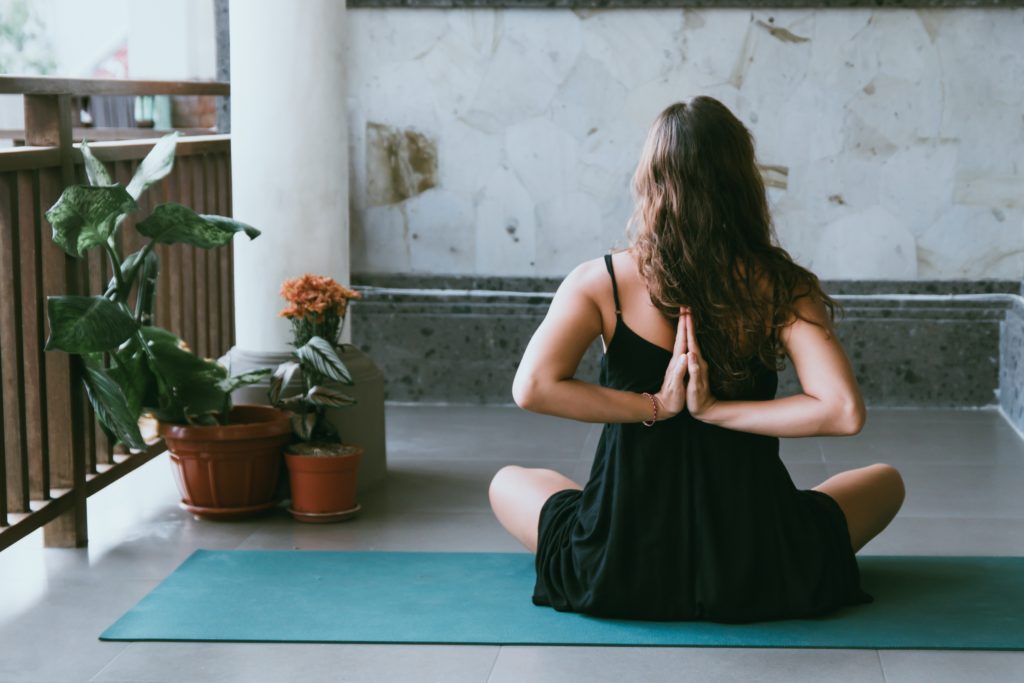Welcoming Taurus Season With a Warming Ritual
By Valerie Tejeda
/ 19 April, 2024
We are entering Taurus season (19 April to 20 May 20th this year)! And something I love about Taurus energy...
Read More

6–10am and 6–10pm Vata reducing, Kapha peak, Pitta rising
10am–2pm and 10pm–2am Kapha reducing, Pitta peak, Vata rising
2–6am and 2–6pm Pitta reducing, Vata peak, Kapha rising
As you can see, Kapha dosha (which brings steadiness and stability, moves slowly and heavily, and governs structure) dominates the mornings and the evenings from 6–10am/pm. These are therefore considered times of day that are safest to exercise; exercising during these windows is a great way to reduce feelings of sluggishness that can accompany an excessive Kapha dosha. We can often feel this heaviness dominating our mornings, or even whole days. (Note that this can also be an indication of toxicity, or ama, in the mornings. The remedies would include the same early morning movement.) Try an early morning daily yoga/exercise routine within this window and see how it works for you. For myself, it has been an amazing experience to start each lockdown day at 8am as a group. We have all been able to experience the very real fruits of a dedicated daily practice aligned with the teachings of Ayurveda, respecting the rhythms of the day and nature of the season. The results have been greater energy, positivity, calmness and focus. Regularity in our daily routine is one of the prescribed ways in Ayurveda to reduce excess Vata dosha and its accompanying restlessness, nervousness, worry and maybe sleeplessness. Such a morning practice is therefore doubly beneficial. We quicken the heavy Kapha dosha and pacify the restless Vata dosha, which can leave us in states of anxiety and worry. If you have a busy schedule, even during lockdown, please know that the key is the time and regularity, not the duration of practice. Rather than getting up and squeezing in a one hour and half practice at 6am now and again, more beneficial would be a regular 15 minute practice that is easily integrated into your daily morning routine. Simply rising each morning, drinking a glass of warm-to-hot water first thing and practicing a few rounds of sun salutations, a little yogic breathing and relaxation or meditation goes a long way to increasing and balancing our energy. As we feel the benefits of this Ayurveda-informed routine, perhaps one day our exercise and/or yoga at these times of day becomes as much a part of our daily life as cleaning our teeth. Then, as we pass through the weeks and months, we will also pass through changing seasons, the effects of which are said to be one of the causes of disease in Ayurveda. Each season is governed by a particular dosha, and so brings with it more of the qualities of that dosha. The heat of summer will bring more heat to fiery Pitta, and the dry and cold of winter will bring more of these qualities to an already dry and cold Vata dosha within us. The doshas are unstable, and are likely to go into excess or become unstable within us according to the nature of our diet and lifestyle, the way we use our minds, and the nature of our environment and climate. To help keep the doshas stable, we can attune our yoga practice not only to the rhythms of the day, but also to the nature of each season.
During the glorious weather we have had lately in the UK, it has been humid and warm even as my group and I start our evening yoga practice. We have adapted our practice accordingly. Not only has it been gentler as an evening practice, the yoga practices selected have been intentionally more cooling and calming for body and mind. We have enjoyed a particular breathing practice during these warm, sticky evenings. I have described it below so you might try it out for yourself.
Each season is governed by a particular dosha, and so brings with it more of the qualities of that dosha. The heat of summer will bring more heat to fiery Pitta, and the dry and cold of winter will bring more of these qualities to an already dry and cold Vata dosha within us. The doshas are unstable, and are likely to go into excess or become unstable within us according to the nature of our diet and lifestyle, the way we use our minds, and the nature of our environment and climate. To help keep the doshas stable, we can attune our yoga practice not only to the rhythms of the day, but also to the nature of each season.
During the glorious weather we have had lately in the UK, it has been humid and warm even as my group and I start our evening yoga practice. We have adapted our practice accordingly. Not only has it been gentler as an evening practice, the yoga practices selected have been intentionally more cooling and calming for body and mind. We have enjoyed a particular breathing practice during these warm, sticky evenings. I have described it below so you might try it out for yourself.

Take a trip into into a world of wisdom

Join the Academy and learn from some of the best spiritual
and wellbeing teachers in the world
Join the Academy and learn from some of the best spiritual
and wellbeing teachers in the world